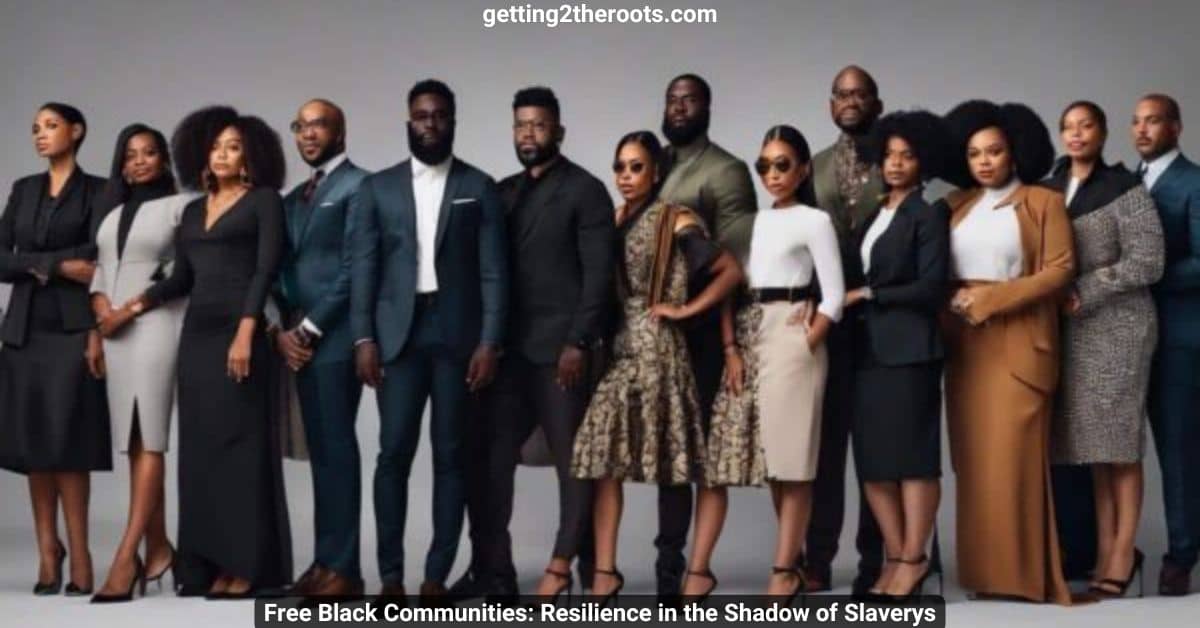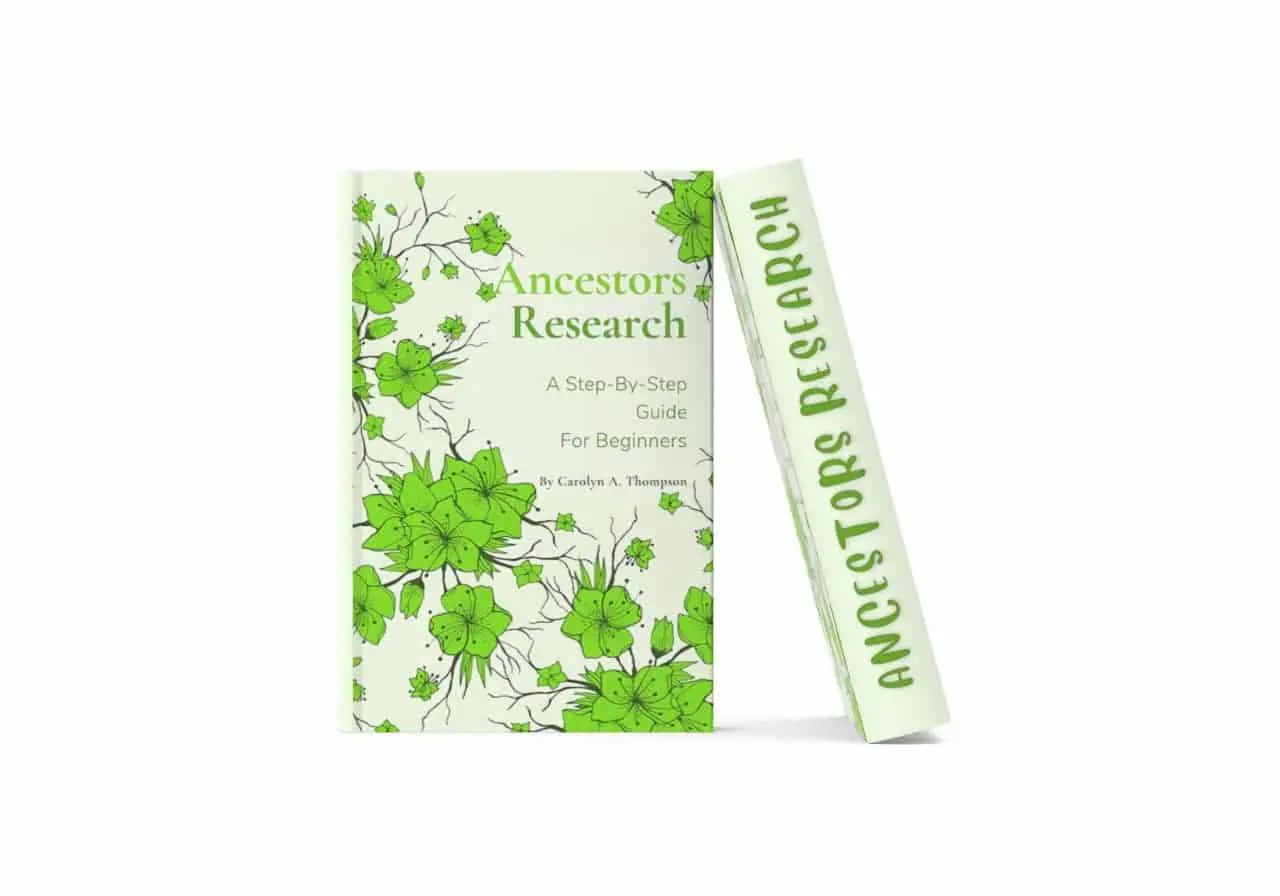Across the vast span of American history, an often overlooked vibrant narrative holds its crucial place – the story of free black communities that emerged and flourished despite the looming shadow of slavery.
Against a backdrop of brutal racial oppression and systemic marginalization, these communities represent a testament to the unyielding spirit of human resilience and the relentless pursuit of liberty and equality.
This journey unveils the intricate facets of their formation, the socio-economic structures that underpinned their survival, the networks of support and resistance they fostered, their complex interactions with slave-holding society, and their lasting influence and legacy in post-slavery America.
Unraveling this narrative not only honors their contribution to the grand tapestry of American history, but also illuminates our understanding of freedom, resilience, and the unending quest for social

Formation and Development of Free Black Communities
The Formation of Free Black Communities During the Era of Slavery
Rarely is the study of history linear or singular in dimension. One such intriguing facet is the evolution and resilience of free black communities in the United States during the protracted era of slavery.
These enclaves provided insight into the mechanisms of resistance and community formation within the broader context of American history because they existed in a society where servitude, stratification, and race-based subjugation were the norm.
These communities started forming as early as the 17th century, with the advent of manumission – the formal release from slavery.
Admittedly, local laws, economic systems, and social customs had a significant impact on prevalence from region to region.
Northern states like Pennsylvania, under the influence of Quaker morality, had the most liberal Manumission Laws, hence boasting a sizeable free black population early on.
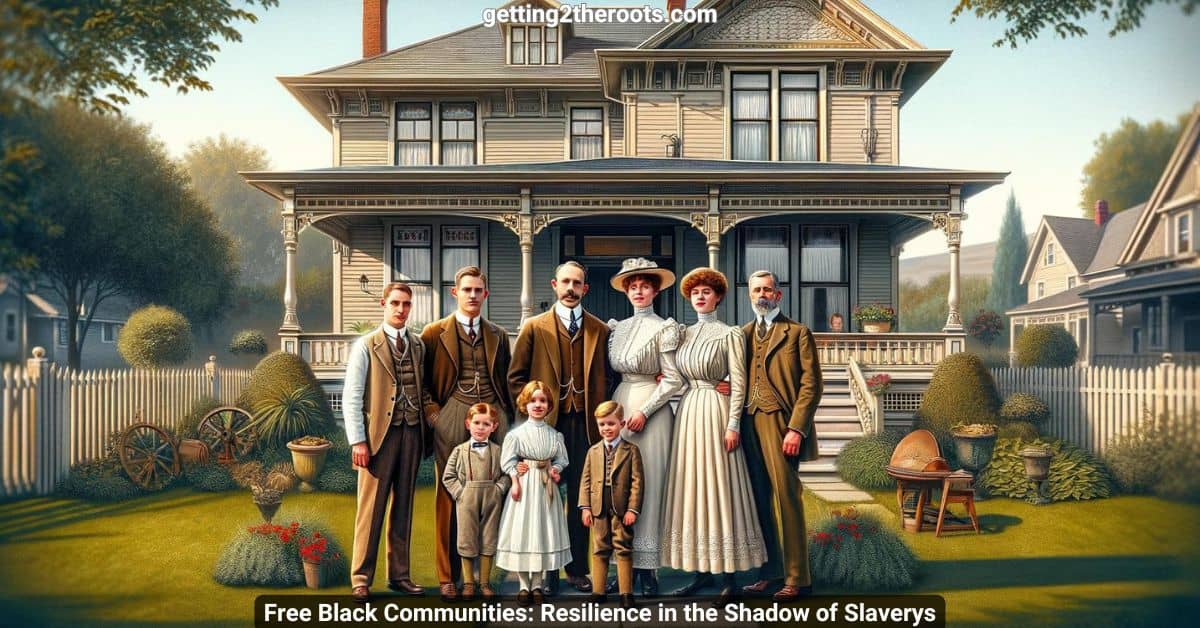
The Arduous Path to Freedom: Self-Purchase and Strategic Emancipation
However, realizing this “freedom” was arduous, generally resulting from self-purchase, strategic military service, or benefactors’ benevolence.
Indeed, it was in the quest for a just and secure existence that these emancipated individuals endeavored to establish and sustain free black communities.
They strategically settled in urban areas or proximate to abolitionist Quaker settlements, fostering a network of shared resources and reciprocal assistance.
Again, the regional variation was significant, with the nature and scope of these communities fluctuating from secluded rural settlements to vibrant urban pockets.
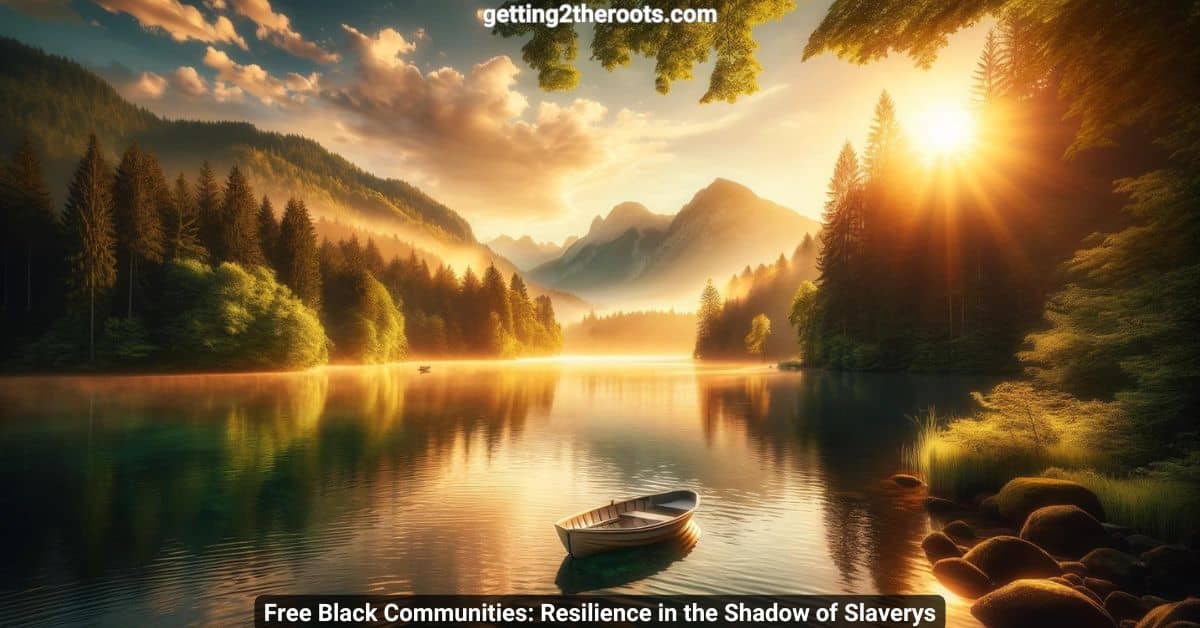
Philadelphia’s Seventh Ward: A Beacon of Black Autonomy and Progress
Prominent among such communities was Philadelphia’s Seventh Ward, heralded by many as a testament of black autonomy.
- Here, institutions like the Free African Society,
- Mutual aid associations
- Black churches played pivotal roles in bolstering societal advancement.
These entities simply weren’t conduits of shared cultural heritage, faith, or mutual support. But also enveloped an extensive variety of social welfare activities, including
- Education,
- Skill development,
- Healthcare,
- And housing,
Thereby significantly enhancing the community’s resilience. An equally important aspect of these communities was the successful establishment of a self-sustaining black economy.
Owing to stringent employment discrimination and land ownership laws, former slaves often made recourse to vocational niches.
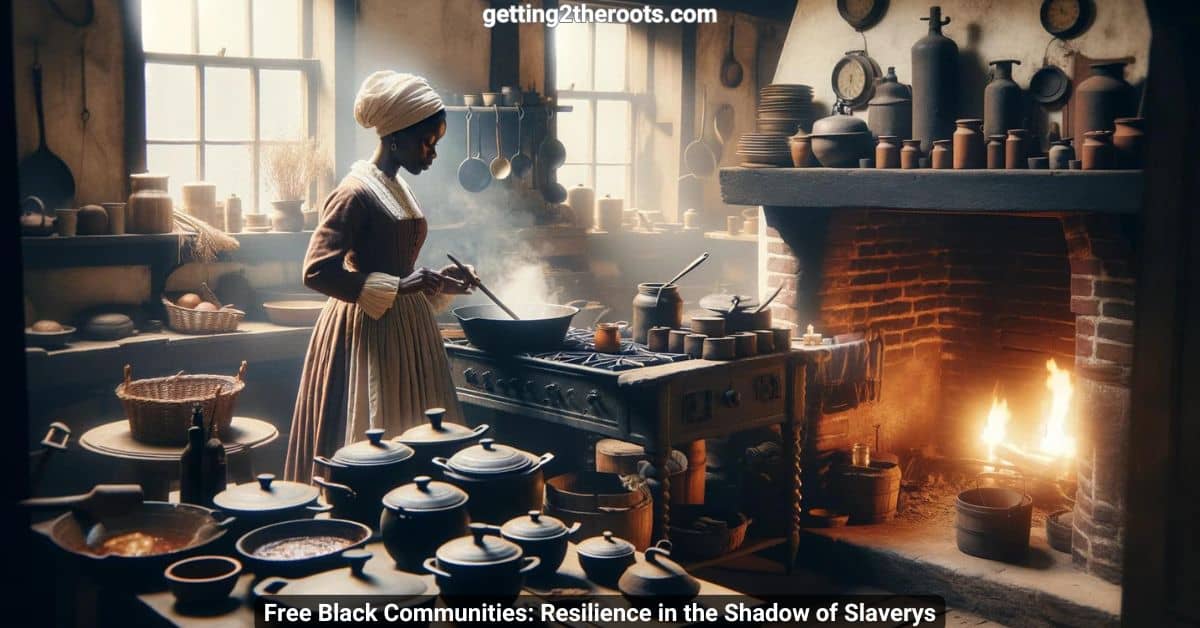
They grabbed hold of opportunities in occupations deemed unfit, unprofitable, or degrading by white society.
The entrepreneurship witnessed in black barbers, seamstresses, dock workers, and domestic servants are worthy pointers.
However, the most dynamic testament to the success of the free black community is perhaps their unwavering pursuit of socio-political activism.
Their relentless lobbying against discriminatory laws and active participation in the Underground Railroad significantly challenged enduring systems of racial oppression.
Additionally, their aid in establishing black newspapers helped spread awareness and mobilize communities, laying crucial groundwork for future civil rights movements.
The study of the formation and development of free black communities during the era of slavery truly offers interesting perspectives.
Their very existence challenged the argument that supported slavery, asserting an often overlooked historical reality: the resilience and agency of African Americans under the most oppressive circumstances.
The understanding of these communities isn’t simply about exploring an anomaly of the past. It underscores themes of endurance and civilization-building.
And the innate human ability to reimagine a world built on equality, freedom, and dignity even in times of stark adversity.
These communities unmistakably underline the complexity and diversity of black history.
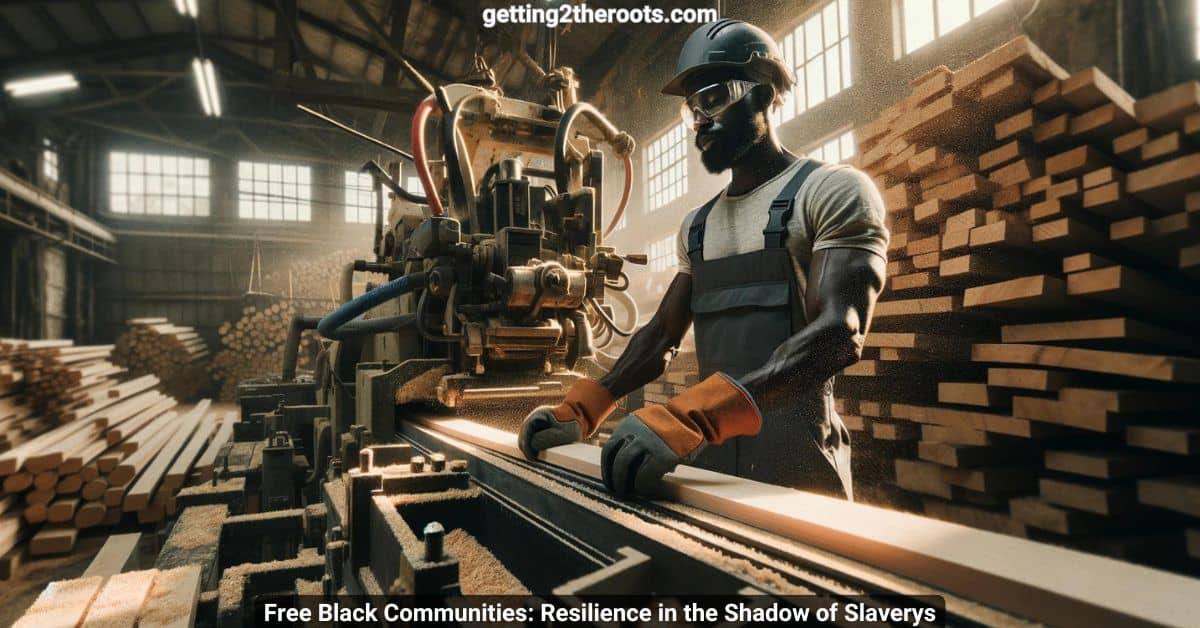
Socio-Economic Structure and Resilience of Free Black Communities
The Emergence of Resilient Free Black Communities: A Further Analysis of Socio-Economic Structures
Probing deeper into the anatomy of the free black communities in North America during the era of slavery, one finds a remarkably intricate socio-economic structure that was undoubtedly instrumental to their survival and resilience.
The architecture of these structures can merely be understood through an analytical examination of their economic structures, their unique adaptations to restrictive laws and societal norms, and their bold strides in education and entrepreneurship.
One of the cornerstones of the economic structure within these communities was the existence of a thriving informal economy.
The informal economy encompassed various activities which included petty trading, domestic services, and skilled labor such as blacksmithing, carpentry, and tailoring.
These occupations, though not part of the mainstream economy, were vital in fostering economic independence among the free black population.
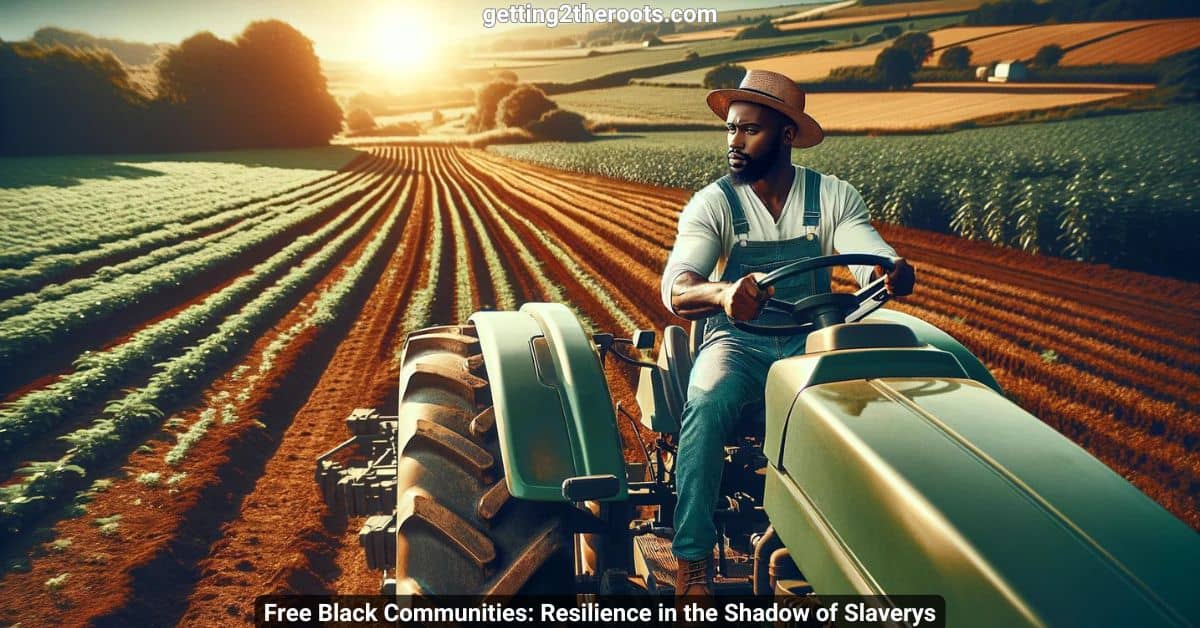
This resiliency, embedded in their self-sustainability, effectively created resilience against volatile circumstances such as harsh economic downturns or hostile societal changes.
Equally as notable, these communities created a sophisticated network of informal banks and lending institutions.
These establishments, often operating under the guise of social clubs or mutual aid societies, played an essential role in the accumulation of black capital.
The financial autonomy offered by these institutions supported the entrepreneurial endeavors of free blacks, further enhancing the resilience and independence of these communities.
Amidst crippling discriminatory laws, free black communities exhibited extraordinary adaptability, devising ingenious methods for circumventing restrictions placed on black land ownership.
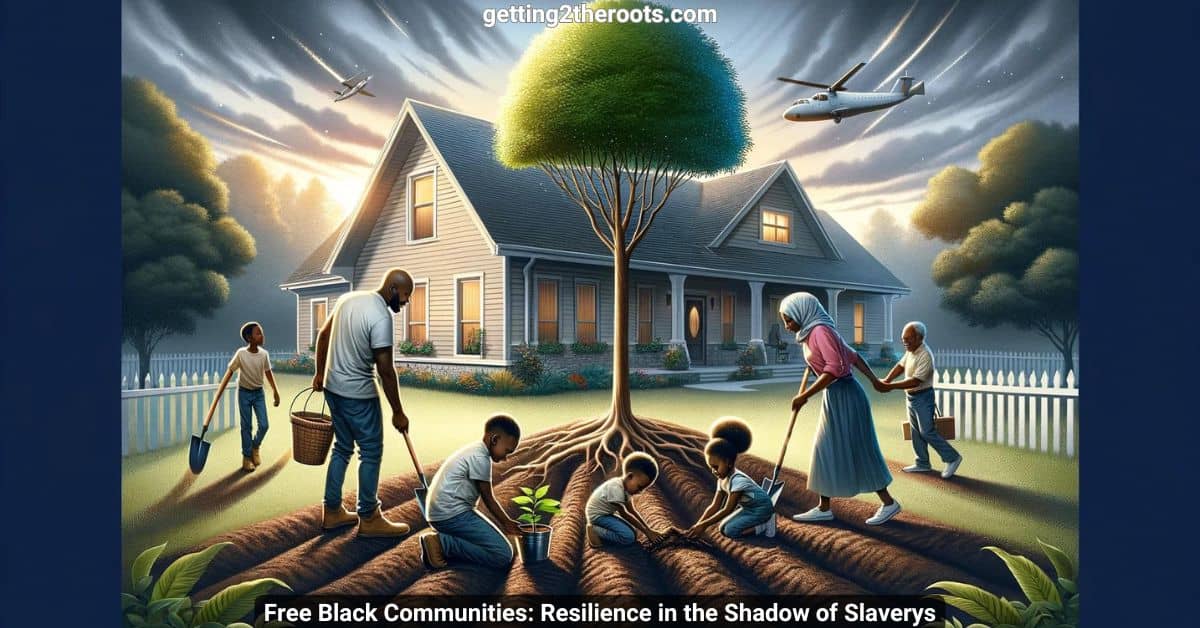
The creation of land trusts or the purchase of properties under emancipated white benefactors significantly expanded property ownership within these communities.
This adaptive prowess profoundly contributed to socio-economic stability and enhanced the overall resilience of these communities.
There was also a concerted effort towards education within these communities, representing a vital investment in their collective future.
Numerous black-run schools flourished, focusing not just on academic education but also vocational training, creating a pool of skilled craftsmen and intellectuals.
The growing educated black population bolstered the community’s socio-economic stability and, hence, resilience.

Lastly, entrepreneurship was a pivotal aspect of the socio-economic structure. Despite discrimination, free black entrepreneurs, both male and female, built thriving businesses ranging from small retail shops to sizable manufacturing entities.
Entrepreneurship became a significant mode of wealth creation, increasing economic diversification and independence.
The socio-economic structure of free black communities during the era of slavery was an amalgamation of economic pragmatism, secret circumvention of prohibitive laws, educational ambition, and entrepreneurial instinct.
It was this structure that internalized a spirit of resilience, warding off external threats and securing the survival of these communities amidst challenging socio-political landscapes.
This historical resilience continues to echo through the centuries, elucidating the indomitable spirit of African Americans.
They remain benchmarks of resilience, their stories demanding further analysis and homage to the larger canvas of black history and heritage.
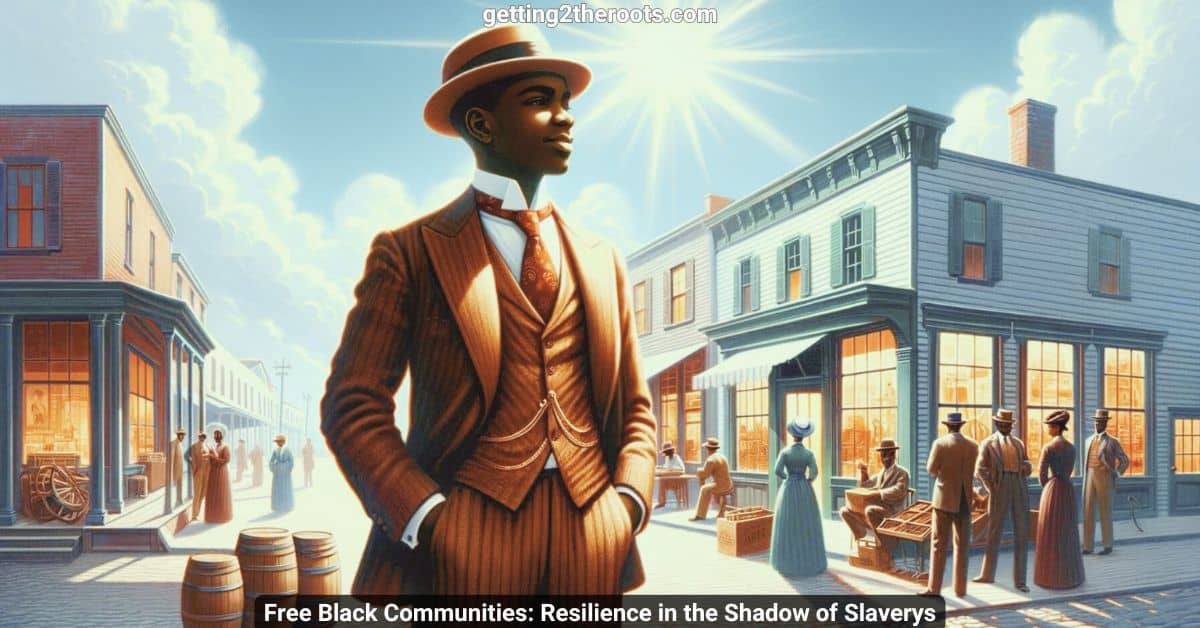
Networks of Support and Resistance
One can’t overstate the role of networks of support and resistance in fostering and preserving these free black communities.
Positioned against societal norms fraught with challenges, these communal microcosms ideally illustrated the robustness of African American fortitude against adversity.
Essentially, these cohesive infrastructures operated as vital veins, pumping life into the free black communities, insulating them against external adversities, and imbuing them with a reinforced shared identity.
Arguably, these networks were the unsung heroes of this era. Essential to understand is that these networks didn’t merely exist.
Rather, they were painstakingly developed, shaped by an acute understanding of the regnant socio-political landscape and predicated on collective survival.
They thrived on cooperation, mutual support, and communal resilience, consistently navigating the narrow tightrope between survival and resistance.
Reflecting on the economic realm, the informal economy in free black communities had a significant role. This was often driven by petty trading, domestic services, and skilled labor.
These flourishing occupations were virtually immune to the contours of state laws, enabling free black communities to conduct business, build wealth, and enhance their living conditions.
Essentially functioning as communal financial lifelines, informal banks, and lending institutions facilitated economic transactions, circumventing the rigid and often discriminatory restrictions on black land ownership.
These financial structures allowed free black communities to pragmatically invest their resources into secure and elevating prospects; education being a paramount recipient.

Investment in education within these communities signaled a collective future-oriented mindset, emphasizing the power of knowledge in a context where intellectual development was often deliberately curtailed.
This was embodied in the establishment of black-run schools and vocational training centers, infrastructures that fostered intellectual growth and skill acquisition, thereby crafting a self-empowering environment.
Entrepreneurship within these communities conveyed the drive towards economic diversification and bedrock independence.
Catering to the communal needs, these ventures were efficiently run by community members, further solidifying the socio-economic structure of free black societies.
In analysis, the role of networks of support and resistance within free black communities illuminates the remarkable resilience and survival tactics employed amidst challenging socio-political landscapes.
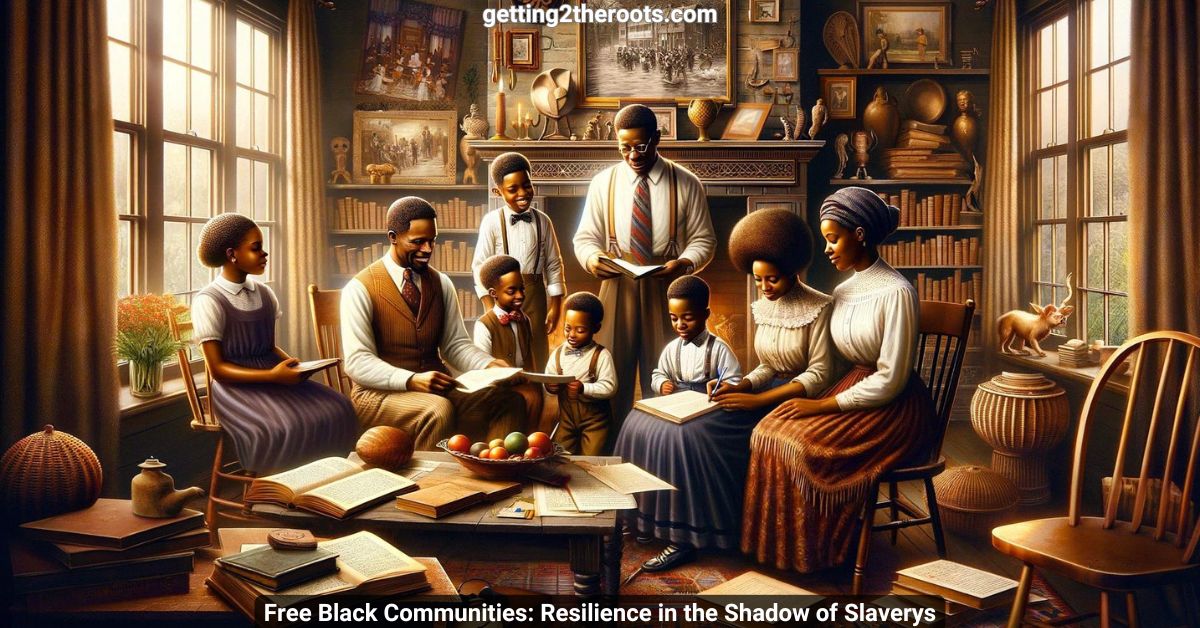
These networks, through their intrinsic complexity and strategic adaptation to societal constraints and opportunities, thus offered the free black communities an extraordinary foundation of communal strength and survival.
These histories bear testimony to a powerful narrative of resilience, community, and survival against formidable adversity, a narrative that continues to influence and shape the American sociocultural landscape today.
Therefore, the understanding and study of these networks offer an illuminating glance into an intricate aspect of American history, contributing to a more nuanced and comprehensive understanding of the nation’s past.
These narratives bear truths that are paramount in contextualizing the current societal dynamics across racial and ethnic lines and hold keys to fostering racial and cultural understanding in contemporary America.
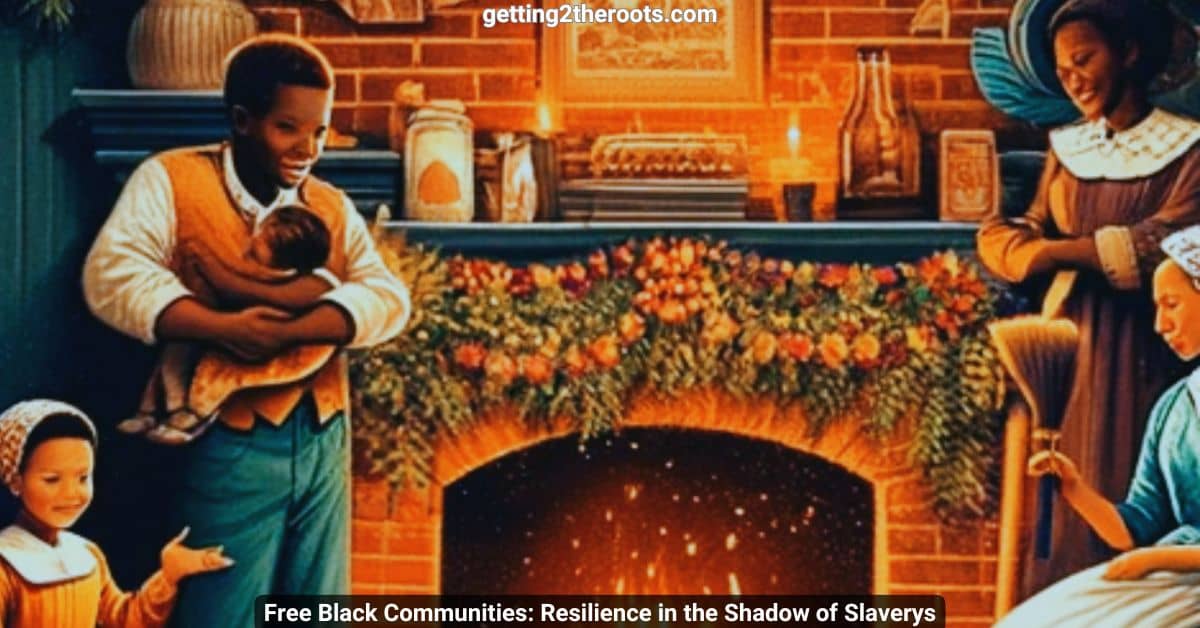
Interactions with Slavery and Slave-Holding Society
Interactions between Free Black Communities and Slaveholding Societies in the United States
Turning our attention to how free black communities interacted with the larger, surrounding slave-holding societies, a rich tapestry of socio-cultural interchange emerges.
The dynamics of this interchange were anything but monolithic, departing considerably from conventional narratives regarding race relations during the time of Slavery.
Freedom, for the black man or woman in the 18th and 19th centuries, did not absolve them from the specter of slavery.
The risk of abduction and sale into slavery was a palpable dread within free black communities.
This risk was exacerbated by the Fugitive Slave Laws, which allowed for such heinous acts, creating a context wherein free black communities lived continuously with a sense of apprehension.

However, this existence was not marked by demure surrender, but rather by defiant resilience.
The free black communities, sensing the precariousness of their freedom, forged tight-knit networks of support.
These networks ranged from early vigilante groups, who protected their kin from kidnappers to involvement in the Underground Railroad, to concerted socio-political activism.
These actions attest to their valiant resistance, and to their pronounced role in shaping the trajectory of slave resistance across the United States.
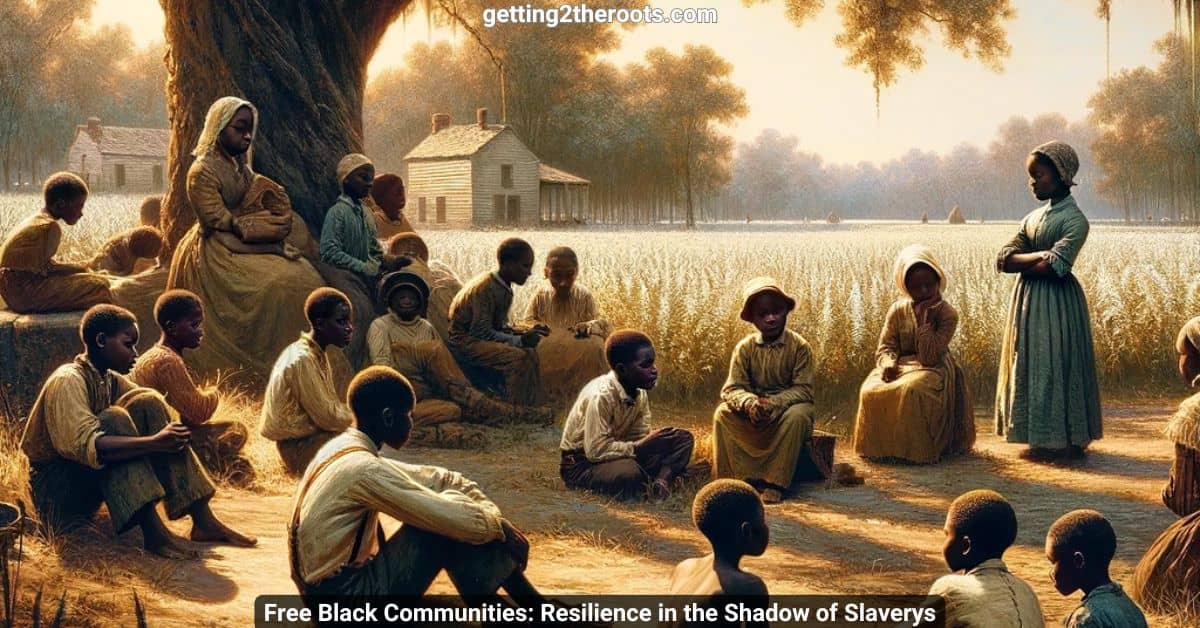
Nevertheless, interactions between slaveholding societies and free black communities were not solely marked by conflict.
There existed rather a deeply entangled co-existence wherein both communities influenced each other culturally, socially, and economically.
Free black communities often provided crucial services to their slaveholding neighbors, such as skilled labor, blacksmithing, and carpentry.
his created points of contact wherein free blacks demonstrated not only their equality but their potential for economic and socio-cultural agency.
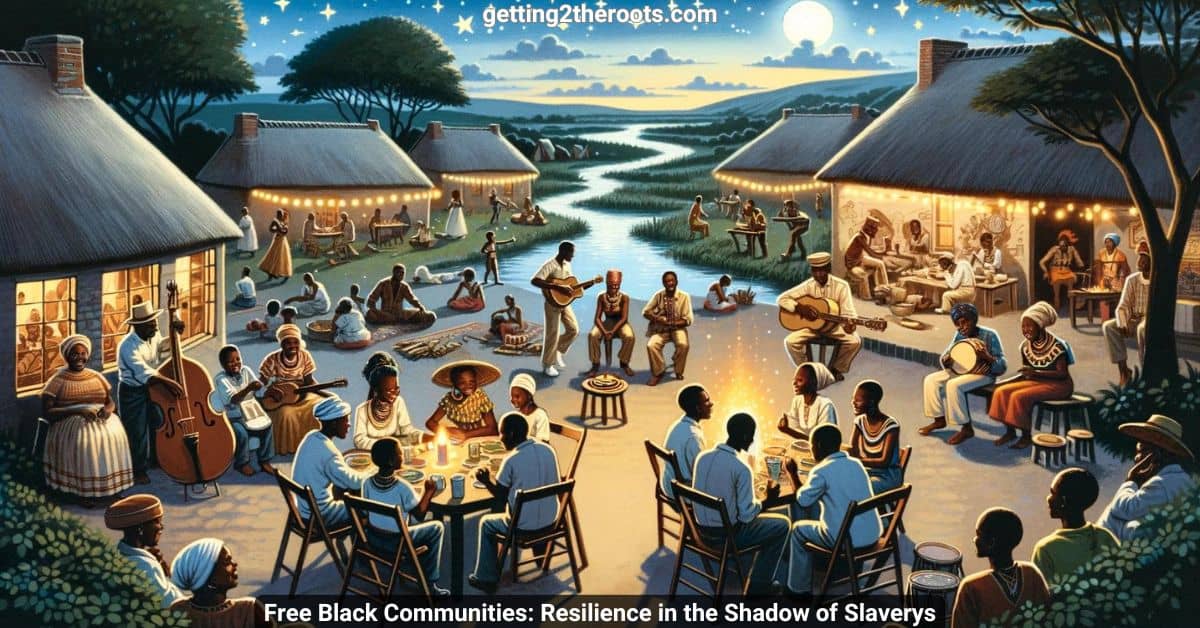
Salient is the vital role free black women played. Often placed in domestic service roles within slaveholding societies, they carried an extraordinary burden.
Subjected to sexual harassment and racial prejudices, these women became inadvertent touchpoints intertwining free black communities and slaveholding societies.
The role they played was not passive. Black women constructed significant networks of support, gathering key intelligence and aiding fleeing slaves, thus turning their circumstantial imposition into a form of resistance.
Further, in several areas, free black communities enjoyed reciprocal economic relationships with their slave-holding neighbors.
Despite oppressive laws and societal norms, free blacks managed to carve out their own economic niches in both urban and rural settings.
Their entrepreneurial spirit offered services, goods, and labor, thus interweaving free black economies with those of slaveholding societies.
Despite the antagonistic societal norms and prejudices of the era, noteworthy instances of co-existence and even alliances emerge.
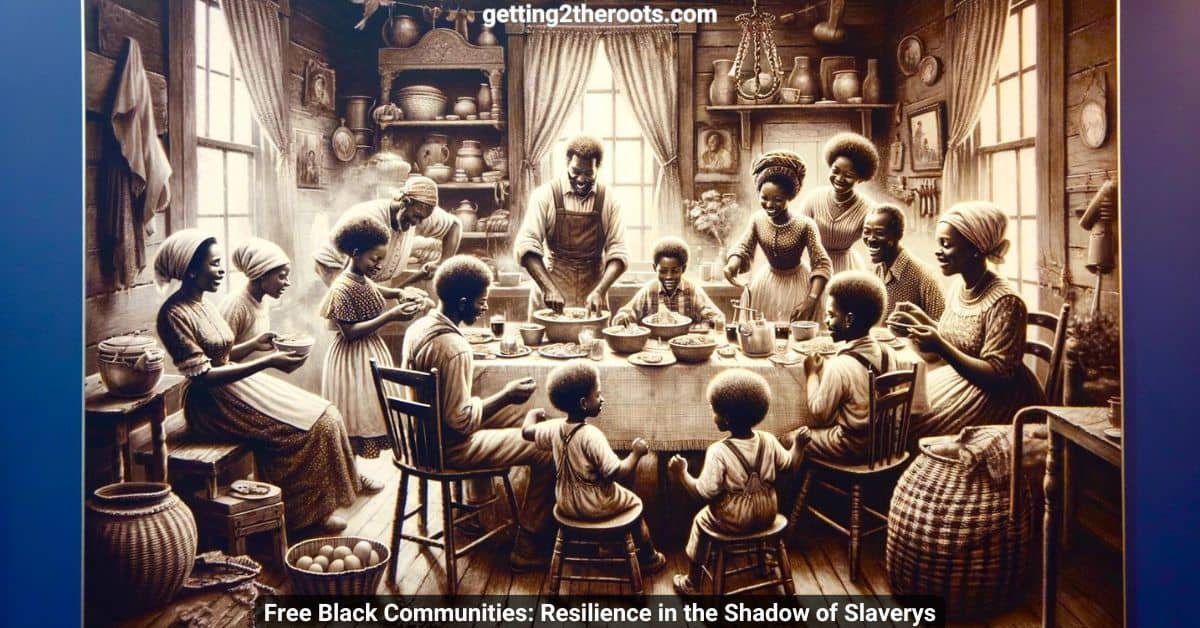
These complicate our understanding of race relations during that contentious period and underscore the historical importance of understanding the agency and depth integral to the free black communities.
Examining this relationship provides a broader comprehension of the various strategies used by African Americans to shape their own destinies, sustain their communities, and resist the dehumanizing impact of slavery.
This agency and capacity for survival lend a new layer to the nuanced understanding of the socio-political landscape, cutting across racial and cultural divides and forging a path toward a comprehensive understanding of American history.
Overall, it is evident that free black communities interacted with the surrounding slave-holding societies in multifaceted ways, enduring and resisting oppression while simultaneously influencing and being influenced by these societies.
Sociocultural exchanges, economic interdependencies, and active resistance all factored into a challenging yet dynamic era of American history, highlighting an epoch that shaped the American socio-cultural landscape.
This intricately woven narrative may give scholars and researchers the necessary perspective to examine modern societal dynamics, thus fostering racial and cultural understanding.
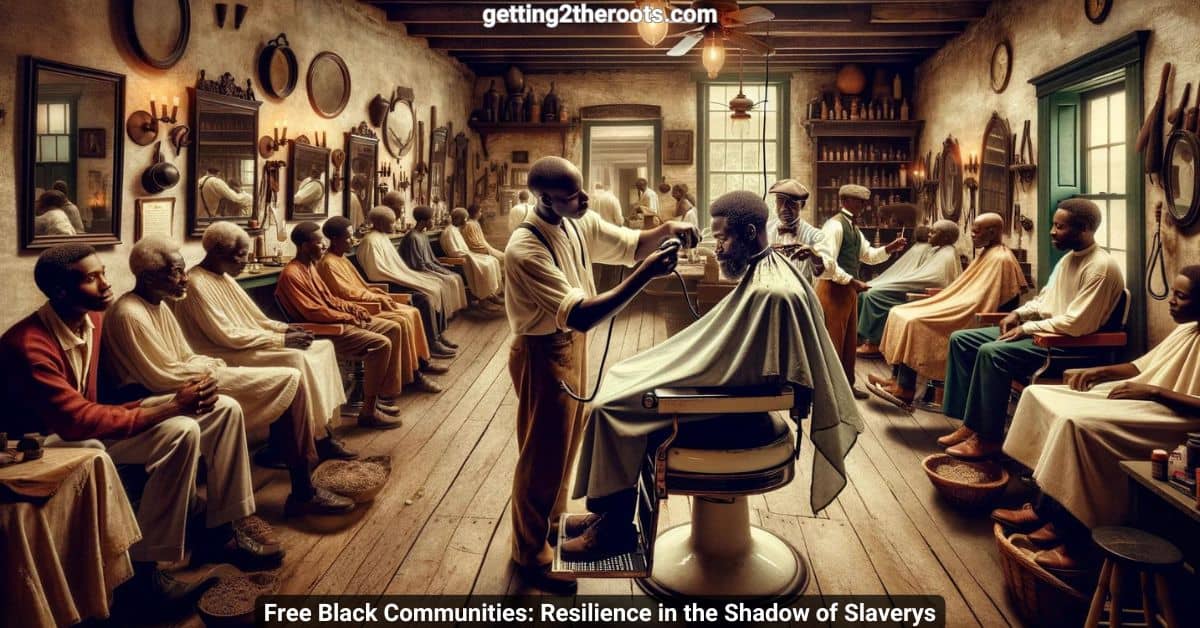
Legacy and Influence on Post-Slavery America
The grave dangers faced by members of free black communities were real, inadvertently fostering a spirit of solidarity and a strong impetus for collective resistance.
Existing on the fringes of a society where the threat of being abducted and sold into slavery loomed large, these communities constantly grappled with precarious livelihoods.
Yet, plumb the depths of their resilience and fortitude and one encounters an unflagging drive towards resisting such dangers, often engaging in tactics for survival that were as innovative and adaptable as they were defiant.
Consider the Underground Railroad, where members of the free black communities played pivotal roles, either as conductors or station masters.
This was not merely an act of subversion against a repressive regime, but also a striking display of their ability to organize, mobilize, and take calculated risks.

Such actions are telling reminders of these communities’ agency and commitment to freedom, traits that now shape our understanding of the black identity and experience in post-slavery America.
Equally noteworthy were the interdependent and complex relationships that developed between the free black communities and the neighboring slaveholding societies.
Instead of a strict binary division, the intricate social fabric was interwoven with lines of cooperation and alliances.
Free black communities not only served as a market for the agricultural products of the white plantations but also provided manual and skilled labor to the predominantly agrarian slaveholding societies.
The economic contributions of free black communities extended beyond mere labor. A lesser-known but vital aspect of these communities was the transformative role played by free black women.
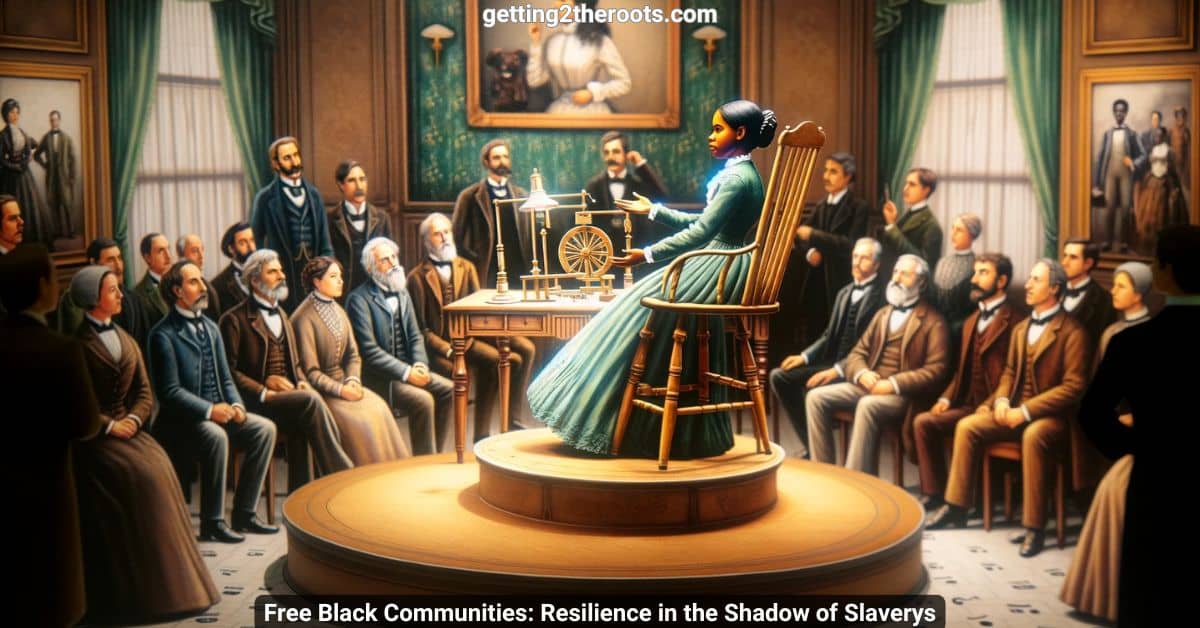
Occupying positions of significance within these communities, they advanced resistance efforts, charting the course of their futures and those of their communities with actions steeped in courage.
Beyond the sphere of economics, sociocultural interactions between free black communities and their counterparts in slaveholding societies were frequent, leading to exchanges that were as profound as they were diverse.
Such influences exerted by free black communities vastly enriched the American cultural landscape. Consider the sphere of music,
- African American spirituals,
- songs of protest,
- Celebration,
- And unity
- Many of which owed their origin and development to these communities.
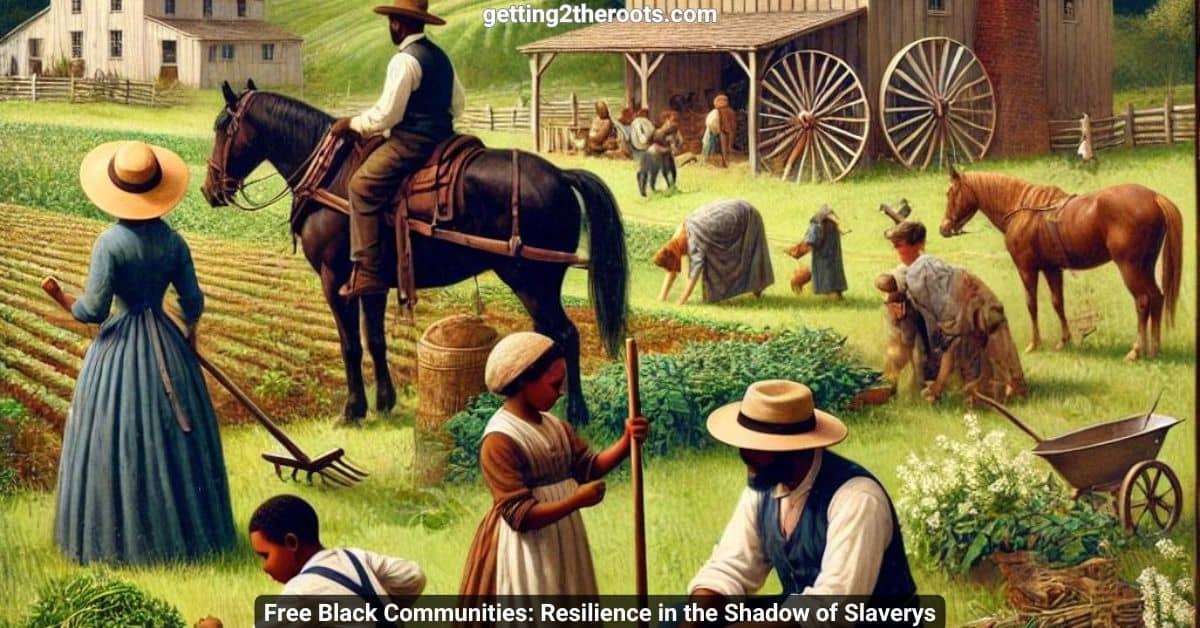
In the face of what seemed insurmountable odds, the communities’ unyielding pursuit of economic self-sufficiency, political representation, and social recognition was powered by a determination to shape their destinies.
By delving into the agency and survival capacity of free black communities, it becomes increasingly clear that their actions and narratives have left indelible marks on the face of American society and culture.
A comprehensive understanding of American history cannot, and indeed should not, be devoid of a meaningful engagement with the experiences and contributions of its free black communities.
Reflective examination of this period not only broadens our comprehension of history but elucidates the contemporary racial and cultural dynamics.
By understanding the past, perhaps we are better positioned to foster a society that is rightfully appreciative of its historic diversity and consciously committed to a more equitable future.
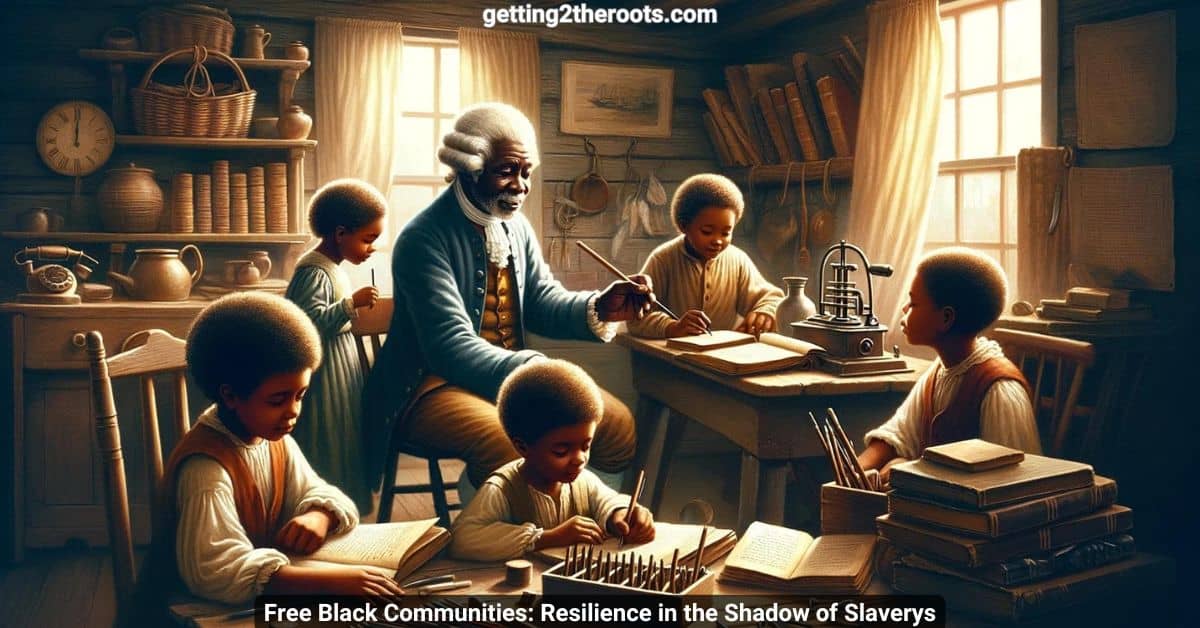
Peeling back the layers of their experience, one begins to discern the true character of these free black communities.
These were not just groupings of individuals. They were potent breeding grounds of resilience, resistance, and revolution staunch against enslavement and oppression.
Running like a vibrant thread throughout post-slavery America, their enduring legacy is quintessential to understanding our current societal fabric and the struggles it embodies.
Whether through their fight for civil rights, innovating self-reliant economic structures, or fostering community networks, they contributed significantly to the way we comprehend and deconstruct the concept of freedom today.
As we celebrate their monumental influence, we are also reminded of our collective commitment to ensuring that every individual, regardless of skin color, is granted the rights and respect they fundamentally deserve.
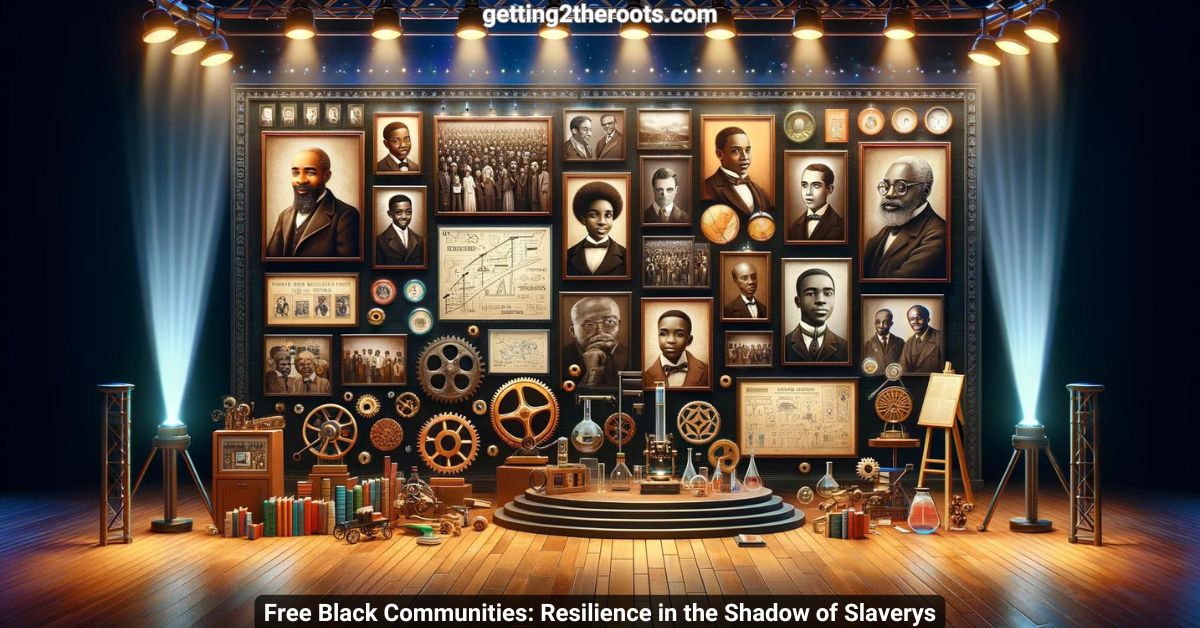
Conclusion
The resilience of free black communities during slavery left an indelible mark on American history. Their ability to build strong, self-sustaining societies under extreme conditions inspires and informs our understanding of freedom and equality.
Explore More: Discover Black History Beyond This Page
If you found this article enlightening, you may also be interested in reading “Pioneering Black Inventors of the 1800s.” This piece offers another fascinating perspective on African American contributions to history and innovation.
For more captivating topics in history, I invite you to visit my YouTube channel, Getting2theRoots. There, you’ll find a wealth of content exploring various historical subjects and eras. Stay curious and keep learning!
FAQ
- What were Free Black Communities?
Free Black Communities were groups of African Americans who, despite the existence of slavery, managed to establish their own societies. These communities were characterized by strong support networks, economic independence, and resistance to oppression. - How did Free Black Communities resist slavery?
These communities resisted through various means, including forming support networks, engaging in socio-political activism, and participating in the Underground Railroad. They also fostered economic independence through entrepreneurship and mutual aid. - What impact did Free Black Communities have on American society?
Free Black Communities played a crucial role in shaping the fight for civil rights and equality in America. Their resilience and strategies for survival influenced future generations and laid the groundwork for the civil rights movements. - How did Free Black Communities interact with slaveholding societies?
Interactions were complex and multifaceted. Free Black Communities often provided essential services to slaveholding societies, while also resisting and subverting the oppressive systems through their own networks of support and activism. - What is the legacy of Free Black Communities today?
The legacy of Free Black Communities lives on in the continued pursuit of equality and justice. Their resilience, solidarity, and commitment to freedom continue to inspire and inform movements for social justice in the modern era.

